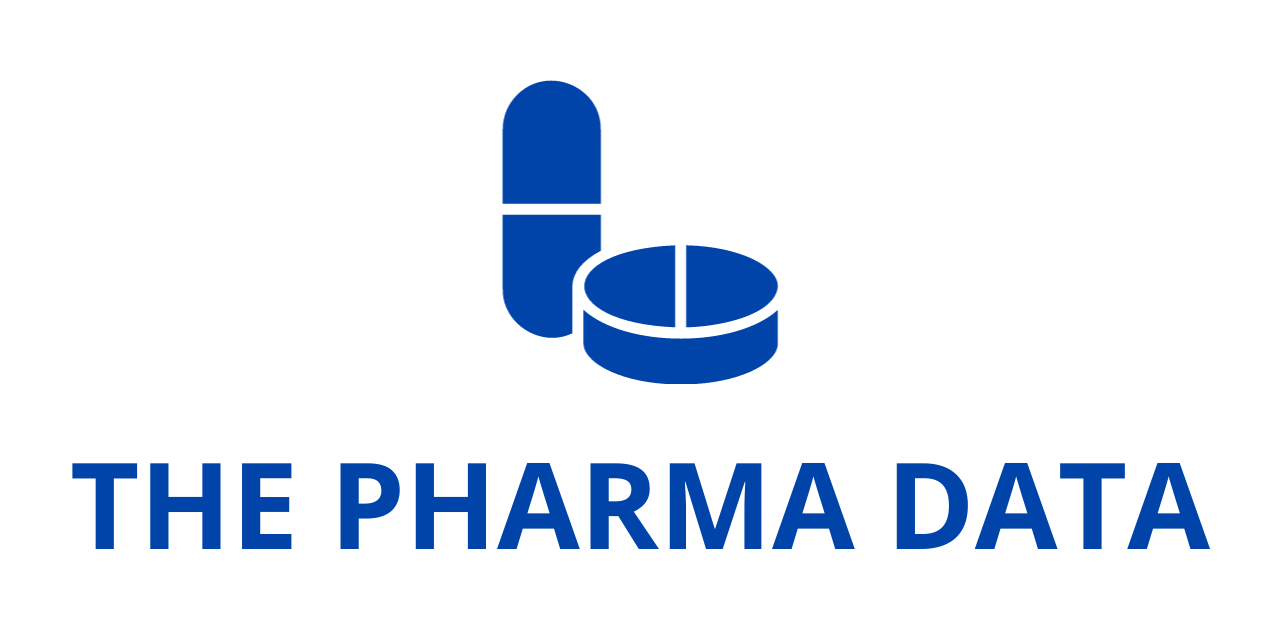
Scholar Rock Announces Landmark Lancet Neurology Publication of Pivotal Phase 3 SAPPHIRE Trial Results for Apitegromab in Spinal Muscular Atrophy
Scholar Rock (NASDAQ: SRRK), a late-stage biopharmaceutical company dedicated to advancing innovative treatments for serious neuromuscular diseases, announced today that highly anticipated data from its pivotal Phase 3 SAPPHIRE trial (NCT05156320) have been published in The Lancet Neurology, one of the world’s most respected peer-reviewed medical journals. The trial’s findings mark a potentially transformative moment in the treatment of spinal muscular atrophy (SMA), demonstrating that apitegromab—an investigational, muscle-targeted therapy—produced significant improvements in motor function in children and adults with SMA already receiving standard-of-care survival motor neuron (SMN)-targeted treatments.
The publication underscores a central clinical challenge: while SMN-targeted therapies like nusinersen and risdiplam help preserve motor neurons and slow disease progression, many patients continue to experience muscle weakness and functional limitations. Apitegromab is designed to address this gap by directly targeting muscle biology, complementing the neuronal benefits of existing SMA drugs.
A Major Step Toward a New Standard of Care
“The robust apitegromab data reinforce that effective SMA treatment regimens should address both motor neuron preservation and muscle function,” said Akshay Vaishnaw, M.D., Ph.D., President of R&D at Scholar Rock. “To improve outcomes and support essential activities like breathing, eating, swallowing, standing, and walking—which require muscle strength and motor function—a comprehensive approach targeting both components of the disease is critical. The SAPPHIRE findings support the value of muscle-targeted therapies for children and adults living with SMA.”
Dr. Vaishnaw’s remarks highlight the broader therapeutic philosophy emerging in neuromuscular medicine: combination approaches may be the key to restoring—not just maintaining—function.
From Conference Halls to Journal Pages
Before its formal publication, the SAPPHIRE trial data had already attracted significant attention in the medical community. Preliminary results were shared at two prominent 2025 scientific gatherings: the Muscular Dystrophy Association (MDA) Clinical & Scientific Conference and the Cure SMA Research and Clinical Care Meeting. Now, the full manuscript—titled “Efficacy and safety of apitegromab in nonambulatory type 2 or type 3 spinal muscular atrophy (SAPPHIRE): a phase 3, double-blind, randomised, placebo-controlled trial”—is publicly available online and will appear in the August 13, 2025 print issue of The Lancet Neurology.
The study’s principal investigator, Thomas O. Crawford, M.D., Professor of Neurology at the Johns Hopkins University School of Medicine, served as lead author. His expertise in SMA clinical research provided crucial oversight to ensure methodological rigor and accurate interpretation of the findings.
Understanding SMA and the Unmet Need
SMA is a rare, SAPPHIRE progressive genetic disorder caused by mutations in the SMN1 gene, leading to insufficient production of survival motor neuron (SMN) protein. This deficiency results in the degeneration of motor neurons in the spinal cord and brainstem, ultimately causing muscle weakness and atrophy. Depending on disease onset and severity, SMA can impair the ability to walk, eat, or breathe, with severe cases presenting in infancy and often leading to early mortality.
While the advent of SMN-targeted therapies has dramatically improved survival and slowed disease progression, residual deficits remain. Patients may still experience challenges in achieving developmental milestones, maintaining posture, or performing daily activities. These persistent functional gaps underscore the urgent need for complementary therapies that address muscle health directly—precisely the niche apitegromab seeks to fill.
SAPPHIRE Trial Design and Scope
The Phase 3 SAPPHIRE study was a large, rigorous, 52-week, randomized, double-blind, placebo-controlled trial enrolling 188 patients between the ages of 2 and 21. All participants were receiving an SMN-targeted therapy—either nusinersen or risdiplam—before and throughout the study period.

The trial population included individuals with nonambulatory type 2 or type 3 SMA, representing a broad spectrum of disease severity and functional capacity. The primary goal was to assess whether adding SAPPHIRE apitegromab to ongoing SMN therapy could yield further improvements in motor function, as measured by the Hammersmith Functional Motor Scale Expanded (HFMSE). This gold-standard clinical measure evaluates gross motor skills such as rolling, sitting, standing, and transferring.
Meeting the Primary Endpoint
The SAPPHIRE trial met its primary endpoint, demonstrating a statistically significant and clinically meaningful improvement in motor function among patients receiving apitegromab compared to placebo. This result is particularly notable given that all participants were already on established SMN therapies—highlighting that the observed benefits were incremental and attributable to apitegromab’s muscle-directed mechanism.
Key efficacy findings in the 2–12-year-old efficacy population included:
- Mean difference in HFMSE change from baseline: +1.8 points (p=0.019) for all apitegromab doses (10 mg/kg and 20 mg/kg combined) compared to placebo.
- Dose-specific performance: The 20 mg/kg cohort showed a +1.4 point mean difference versus placebo (p=0.11), indicating a trend toward benefit even at the higher dose.
Importantly, HFMSE gains in SMA are difficult to achieve in a year-long study, making even small point differences clinically meaningful—especially in a progressive disease where stability itself is often considered a success.
Consistent Benefits Across Subgroups
In the broader 2–21-year-old analysis, apitegromab demonstrated consistent HFMSE improvements across various predefined subgroups, including:
- Age brackets
- Type of SMN-targeted therapy received
- Age at initiation of SMN-targeted therapy
- Geographic region
Such uniformity reinforces the therapy’s potential utility across diverse patient demographics and treatment histories.
Secondary Endpoint Insights
The trial also explored secondary measures to capture the breadth of functional improvements. Among 2–12-year-olds:
- 30.4% of apitegromab-treated patients achieved a ≥3-point HFMSE improvement at 52 weeks, compared to 12.5% of those on placebo.
- 19.6% achieved a ≥4-point improvement, compared to 6.3% on placebo.
These responder analyses suggest that a meaningful subset of patients experienced not just stabilization, but tangible functional gains.
Positive trends also emerged in other validated motor function assessments:
- Revised Upper Limb Module (RULM): Evaluates upper limb dexterity, strength, and range of motion.
- WHO Motor Development Milestones: Tracks fundamental developmental skills like sitting and standing.
Safety Profile and Long-Term Tolerability
Safety is a critical consideration for therapies in pediatric and adolescent populations, especially when long-term, chronic administration is anticipated. Apitegromab was well-tolerated across all age groups, with no new safety signals detected during the trial. The safety profile closely mirrored that seen in the earlier Phase 2 TOPAZ study and its ongoing extension, in which some patients have now received over four years of continuous treatment.
This continuity in safety findings provides reassurance for both clinicians and regulators as apitegromab advances toward potential market authorization.
Regulatory Momentum and Commercial Planning
Scholar Rock’s progress extends beyond the clinical realm. The company has already submitted a Biologics License Application (BLA) to the U.S. Food and Drug Administration (FDA), which has granted priority review. This designation accelerates the review timeline for drugs that could offer significant improvements over existing therapies. The FDA’s target action date, under the Prescription Drug User Fee Act (PDUFA), is September 22, 2025.
In parallel, apitegromab is under review by the European Medicines Agency (EMA), reflecting Scholar Rock’s intent to bring the therapy to patients globally.
Anticipating potential SAPPHIRE regulatory approvals, the company is preparing for a U.S. commercial launch in 2025, followed by a European launch in 2026. These preparations include manufacturing scale-up, supply chain readiness, and engagement with healthcare providers to ensure smooth adoption upon approval.
A Patient-Centric Future for SMA
For patients and families living with SMA, each point gained on the HFMSE or milestone achieved in physical capability can translate into meaningful changes in independence and quality of life. The SAPPHIRE trial not only validates apitegromab’s potential role in enhancing function but also reinforces a broader shift in SMA treatment paradigms—from merely slowing decline to actively promoting gains.
Dr. Crawford, reflecting on the trial’s publication, noted that such advances “offer hope that the next chapter of SMA care will be one where combination therapies deliver sustained and measurable functional improvements over the long term.”
About Apitegromab
Apitegromab is a monoclonal antibody designed to inhibit the activation of myostatin, a negative regulator of muscle growth. SAPPHIRE By preventing myostatin activation, apitegromab aims to promote muscle mass and strength, addressing the muscle weakness that persists even with SMN-targeted treatment.
If approved, apitegromab would represent the first muscle-directed therapy for SMA, complementing existing drugs that primarily target the neuronal aspect of the disease.
With regulatory decisions on the horizon and its findings solidly anchored in high-impact scientific literature, Scholar Rock is positioned at a pivotal moment. The company’s work reflects a growing recognition that addressing both the neural and muscular dimensions of SMA could yield the most comprehensive benefits for patients.
For now, the SAPPHIRE SAPPHIRE trial stands as both a scientific achievement and a beacon of hope—a step closer to a world where SMA patients not only live longer but also move, play, and thrive with greater independence.
About Apitegromab
Apitegromab is an investigational fully human monoclonal antibody inhibiting myostatin activation by selectively binding the pro- and latent forms of myostatin in the skeletal muscle. It is the first muscle-targeted treatment candidate in spinal muscular atrophy (SMA) to demonstrate clinical success in a SAPPHIRE pivotal phase 3 clinical trial. Myostatin, a member of the TGFβ superfamily of growth factors, is expressed primarily by skeletal muscle cells, and the absence of its gene is associated with an increase in muscle mass and strength in multiple animal species, including humans.
Scholar Rock believes that its highly selective targeting of pro- and latent forms of myostatin with apitegromab may lead to a clinically meaningful improvement in motor function in patients with SMA. The U.S. Food and Drug Administration (FDA) has granted Fast Track, Orphan Drug and Rare Pediatric Disease designations, and the European Medicines Agency (EMA) has granted Priority Medicines (PRIME) and Orphan Medicinal Product designations, to apitegromab for the treatment of SMA. Apitegromab has not been approved for any use by the FDA or any other regulatory agency.
About the Phase 3 SAPPHIRE Trial
SAPPHIRE was a randomized, double-blind, placebo-controlled Phase 3 clinical trial that evaluated the safety and efficacy of apitegromab in nonambulatory patients with Types 2 and 3 SMA who were receiving current standard of care (either nusinersen or risdiplam). SAPPHIRE enrolled 156 patients aged 2-12 years old in the main efficacy population.
These patients were randomized 1:1:1 to receive either apitegromab 10 mg/kg, apitegromab 20 mg/kg, or placebo by intravenous (IV) infusion every 4 weeks for 12 months. The trial also enrolled 32 patients aged 13-21 years old. These patients were randomized 2:1 to receive either apitegromab 20 mg/kg or placebo every 4 weeks for 12 months.
About SMA
Spinal muscular atrophy (SMA) is a rare, severe, genetic neuromuscular disease that affects an estimated 30,000 to 35,000 people in the SAPPHIRE United States and Europe. The disease is characterized by the irreversible loss of motor neurons, atrophy of the voluntary muscles of the limbs and trunk, and progressive muscle wasting that causes continuous motor function decline throughout life and can diminish the independence of both children and adults.
While there has been progress in the development of therapeutics that address the loss of motor neurons, there continues to be a high unmet need for therapies that directly address the progressive muscle weakness that leads to loss of motor function in SMA.
About Scholar Rock
Scholar Rock is a late-stage biopharmaceutical company focused on developing and commercializing apitegromab for children and adults with spinal muscular atrophy (SMA) and other severe and debilitating neuromuscular diseases. As a global leader in the biology of the transforming growth factor beta (TGFβ) superfamily, the company is named for the visual resemblance of a scholar rock to protein structures.
Our commitment to unlocking fundamentally different therapeutic approaches is powered by broad application of a proprietary platform, which has developed novel monoclonal antibodies to modulate protein growth factors with extraordinary selectivity. By harnessing cutting-edge science in disease spaces that are historically under-addressed through traditional therapies, Scholar Rock works every day to create new possibilities for patients. Learn more about our approach at ScholarRock.com and follow @ScholarRock and on LinkedIn.




